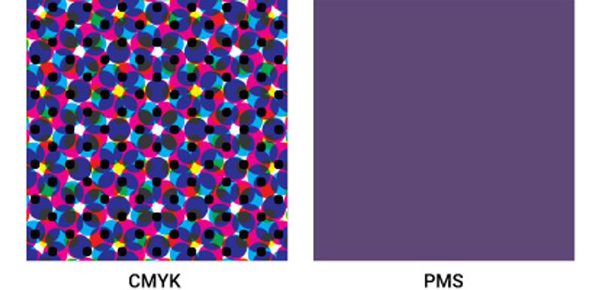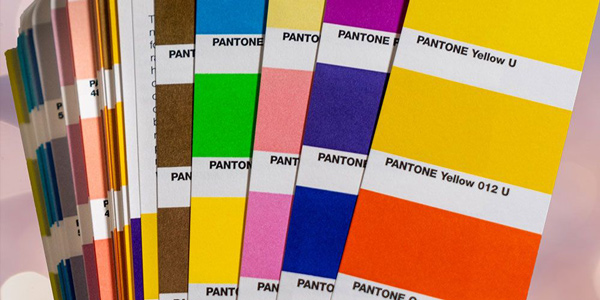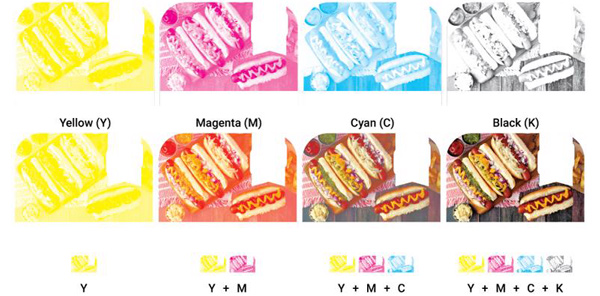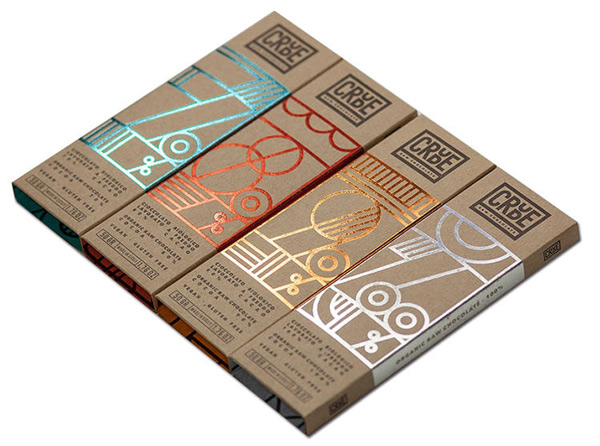Spot Color vs CMYK Color: Essential Differences Explained
When it comes to printing and graphic design, you may face the dilemma of choosing between spot color and CMYK color methods. Each has its own advantages and disadvantages, and the decision ultimately depends on your project's specific requirements and desired outcomes. Understanding the differences between these two color processes can help you make more informed choices and produce higher-quality results in your print projects.
Spot color is a method of printing using pre-mixed inks that are assigned specific color values which correspond to the Pantone Matching System (PMS). This method is preferred for jobs that require accurate color reproduction or when a limited number of colors are needed. By using spot colors, you can ensure consistency and vibrant hues across all your print materials.
On the other hand, CMYK, which stands for Cyan, Magenta, Yellow, and Key (Black), is a process that uses four ink colors to create a wide range of color combinations by overlaying tiny dots. This method is common for digital and offset printing processes, as it can produce a high degree of detail and a broader color spectrum. By using CMYK, your designs can achieve a more photorealistic appearance, which is often desirable for full-color images and intricate patterns.

Understanding Spot Color and CMYK Color
Definition of Spot Color
Spot color refers to using a single, pre-mixed ink tone in your printing projects. It's great for when you require consistent, accurate color matching. Typically, spot colors are only applied when your project calls for 1 to 3 colors. Some benefits of using spot color are:
-
Cost-effective: It often costs less to use spot colors when printing a limited number of colors.
-
Color consistency: Spot color ensures that your brand colors are correctly reproduced across all your business materials.
-
Saturated colors: Spot colors are typically more vibrant than their CMYK counterparts.
However, keep in mind that spot colors are not suitable for printed images with complex color combinations or gradients.
Definition of CMYK Color
CMYK color is the standard printing process that blends four primary ink colors--cyan, magenta, yellow, and black (key). Hence, it stands for the CMYK Letter. It's a subtractive process which means that colors are made by removing light. Your artwork is first separated into these four colors, and then these inks are combined during the printing process to reproduce the full-color spectrum. Some advantages of using CMYK color are:
-
Versatile: CMYK is ideal for projects that have a variety of color values, such as photographs and complex graphics.
-
Wide color range: You have access to a vast array of color options through the combination of the four primary inks.
-
Economical for small runs: If you are printing a low quantity of materials, CMYK can be a cost-effective method.
Keep in mind that since CMYK colors are made by combining inks, achieving an exact color match may be challenging, as compared to using spot colors.
How Spot Color and CMYK Color Impact Design
Advantages of Spot Color
Spot colors can greatly benefit your designs. Here are a few key advantages:
-
Consistent color reproduction: Spot colors ensure consistency across different print materials and platforms, delivering the exact color you intended for your design.
-
Cost-effective in specific use cases: For projects that require only one or two colors, spot color printing can be more cost-effective than full-color CMYK printing.
-
Enhanced design elements: Using spot colors allows for more vibrant and saturated colors, perfect for brand logos or specific design elements.
Advantages of CMYK Color
CMYK color also offers valuable benefits:
-
Full-color printing capabilities: CMYK allows for a wide range of colors, making it ideal for creating detailed, full-color designs and images.
-
Compatibility with digital printing: If your project requires digital printing, CMYK is the industry standard and will yield the best results.
-
More flexibility for color adjustments: CMYK provides easier color adjustments during the pre-print stage, allowing for fine-tuning your design with precision.
Choosing the Right Color System
When deciding between spot color and CMYK color, consider the following:
-
Project requirements: Evaluate the specific needs of your project, including the number of colors required, the desired print method, and the intended output.
-
Budget constraints: Assess the cost implications of using spot color or CMYK to ensure the chosen system fits within your budget limitations.
-
Importance of color accuracy: If color accuracy and consistency are crucial for your design, particularly for brand elements, spot color might be the ideal choice.
Ultimately, the choice between spot color and CMYK color will depend on your unique design needs and preferences.
Printing Process and Techniques
Spot Color Printing Process
In spot color printing, you use a specific color ink for each color in your design. This process is ideal for creating consistency and accuracy, as each ink is pre-mixed before printing. You will typically find spot color printing useful for logos and branding materials where precise color reproduction is crucial.
-
Choose the Pantone Matching System (PMS) colors for your design.
-
Your printer will mix the inks according to the PMS color code.
-
Printers use a limited number of ink stations, usually 1 to 4, which can limit the total number of colors.
CMYK Color Printing Process
CMYK color printing is a process where colors are created using a combination of four inks: Cyan, Magenta, Yellow, and Key (Black). This method is commonly used in offset and digital printing for a wide range of products, such as brochures, catalogs, and more.
Here's how the process works:
-
Your design is separated into CMYK channels to create individual color plates.
-
The plates transfer the corresponding inks to the printing surface.
-
Overlapping inks create a wide color spectrum using limited ink stations.
Keep in mind that your printer's color gamut may vary, which could affect the color reproduction of your design. To ensure the best possible outcome, work closely with your printer and use color management tools like color profiles and proofing.
Cost and Efficiency
Comparing Spot Color and CMYK Costs
When you're choosing between spot color and CMYK, it's important to consider the costs and efficiency of each printing process. Spot color printing requires a single ink color for each spot color used, while CMYK printing mixes four inks (cyan, magenta, yellow, and black) to create various colors. Therefore, spot color printing can be more cost-effective if your design has a limited number of colors.
However, if your design has many colors or gradients, the CMYK process may be a better option. The cost of CMYK printing depends on how many colors you're using, but generally, it can be more expensive than spot color printing for designs with limited colors. Keep in mind that color matching might not be as precise with CMYK compared to spot color.
When to Use a Combination of Both
Sometimes, your design may benefit from using a combination of both spot color and CMYK processes. This could be the case if:
-
You have a limited-color design with a critical color that needs precise matching (use spot color for the critical color and CMYK for the rest).
-
Your design has a metallic or fluorescent color that cannot be reproduced using CMYK (use spot color for the special color and CMYK for the rest).
When combining both techniques, be aware that the costs will likely be higher than when using only spot color or CMYK. However, you'll be able to maintain the quality and precision of your critical and special colors while still using CMYK for other colors in your design.
Remember, it's essential to consider the intent and medium of your project when selecting the best printing process. By weighing the costs and efficiency of spot color and CMYK, you can make an informed decision that best suits your needs.
Frequently Asked Questions
1. What are the main differences between spot and CMYK colors?
Spot colors are premixed inks, each created from a specific formula. They are used for printing specific colors, often brand colors or highly saturated tones. CMYK colors, on the other hand, are produced by mixing four primary ink colors: cyan, magenta, yellow, and key (black). This process is also known as full-color or process printing.
2. How is spot color printing different from CMYK?
In spot color printing, you use a single ink to create a specific color, while CMYK printing involves the combination of the four primary inks. Spot color printing is typically more accurate in reproducing specific colors, but it can be more expensive as each additional color requires a separate printing plate.
3. Can spot colors be accurately reproduced in CMYK?
It is not always possible to accurately reproduce spot colors in CMYK printing. This is because the CMYK color space is smaller than the spot color space, which means that some spot colors cannot be created using only the four CMYK inks. However, CMYK can often achieve close approximations of spot colors.
4. When is it best to use spot colors over CMYK?
You should consider using spot colors when you need to match a specific color as accurately as possible, such as your brand's signature color. It's also great for limited-color designs and when working on materials like metallics or fluorescents. Conversely, CMYK is ideal for full-color printing, like photographs, where a wide range of color combinations is required.
5. What are some common examples of spot colors?
Some common examples of spot colors include Pantone colors, metallic inks, and fluorescent inks. These colors are often used in branding materials, packaging, and promotional materials to create a consistent and unique appearance.
6. Is Pantone considered a spot color system?
Yes, the Pantone Matching System (PMS) is considered a spot color system. Pantone colors are premixed inks that provide a standardized method of reproducing and referencing colors. With this system, you can ensure that the colors in your design will remain consistent across different print runs and materials.

Unico printing company in located in China, and we can make everything made from paper material with your design printing, including carton boxes, rigid boxes, corrugated boxes, and custom paper bag. Spot color and process color (CMYK color) are both available here. If you are looking for a supplier for your packaging needs or any questions about the printing, please don't hesitate to contact us. Our service team would reply to you the soonest on working days.





